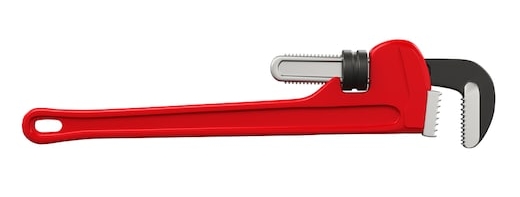Pipe Wrench Fatality
We have received notification of a fatality on an operational drill site when a drill rig assistant was fatally injured after being struck on the head by a pipe wrench.
Full details are not yet available as the accident is still under investigation. This alert is therefore based on what details are available at this time and is intended to act as a reminder to ensure that appropriate controls are in place when pipe wrenches or any other type of wrench are used on a drill site.
Should the investigation uncover causes that are different from those assumed in this alert, these details will be included in a revised alert.
Apparent causes
The driller and a drill rig assistant were attempting to back-off the saver-sub from the rotation head of a top drive drill rig.
In this instance it appears that two pipe wrenches were used. One was placed on the spindle of the rotation head and the wrench was jammed against the mast using the rotational power of the rotation head. A second wrench was then placed on the saver-sub. It is unclear if they were successful in backing off the saver-sub but it appears that the Driller activated the rotation function of the rig to release the force that was holding the first wrench against the mast.
For some reason, the speed of rotation was high causing the wrench to very rapidly rotate with the spindle of the rotation head. The drill rig assistant was in a position where the wrench could impact him and he was struck on the side of his head by the handle of the wrench. The drill rig assistant unfortunately died as a result of the injury sustained.
Recommendations
Because of the way in which some top drive drill rigs trip drill rods, the connection between the saver sub and the rotation head spindle is intentionally made up under very high torque or the connection is artificially strengthened by using a locking compound. Breaking of the joint is therefore sometimes very difficult and requires that abnormal amounts of torque are applied to the connection.
Some drill rigs are capable of breaking the connection by using the gripping force of the rod clamp / rod breaker combined with the rotational power of the rotation head. On many drills however, this functionality is absent and so the connection has to be broken out manually using wrenches. This is unavoidable and so it is recommended that:
In keeping with standard safety management principles, a full and proper risk assessment must be conducted on the procedure and all hazards identified prior to the activity being conducted. It is very important to recognise that the inclination of the borehole has a significant impact on the risks and therefore the way in which the procedure is conducted. The operation to back off a saver-sub on a vertical drillstring will be managed differently from a saver-sub on a sub-vertical drillstring.
Wrenches or any other devices, must never be placed on a drillstring if the drillstring is under power.
While this accident occurred on a top drive drill rig, wrenches are frequently used also to break out connections on hydraulic longstroke diamond core drills. The same recommendations as above apply equally to all types of drill rig in all drilling applications.

